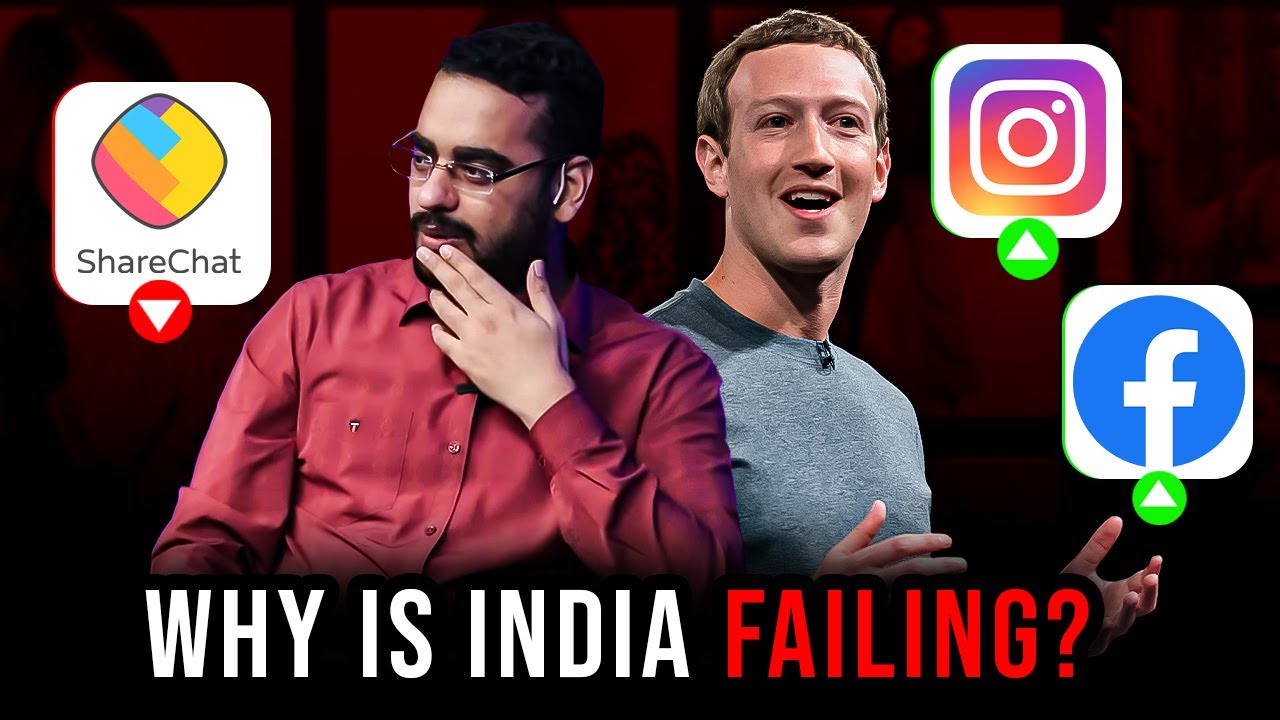00:00 – Intro
01:31 – History of Social Media
03:55 – Struggles of Indian Startups
07:03 – Learnings for Entrepreneurs
The video discusses the failure of Indian social media platforms and explores the challenges they faced. It begins by highlighting the dominance of global social media platforms and the significant Indian user base on these platforms. Despite India having the world’s largest population and second-largest online population, there is a notable absence of successful Indian social media platforms.
The narrator attributes this gap to historical factors. During the first wave of social media in the early 2000s, when platforms like Facebook, Twitter, WhatsApp, and Instagram emerged, India lacked a conducive startup ecosystem and had limited internet penetration. The absence of talent and investment opportunities led Indian entrepreneurs to build such platforms in the United States. Consequently, India missed capitalizing on the initial wave of social media.
The second wave of social media, driven by the rise of TikTok in 2016, originated in China rather than the United States. TikTok’s unprecedented growth in China and subsequently in India created an opportunity for Indian entrepreneurs to fill the void left by its ban. By 2020, India had become the world’s third-largest startup ecosystem, with a substantial internet user base.
The video then delves into the reasons behind the failure of Indian social media startups. After the ban on TikTok, several Indian entrepreneurs rushed to develop their versions of short video apps. However, these apps, such as Sharechat’s Moj, failed to innovate beyond being TikTok clones. The lack of a sophisticated AI recommendation engine like TikTok’s, which provided personalized content and identified viral trends, resulted in low user engagement.
Moreover, the video highlights the monetization challenges faced by these platforms. Due to poor technology and user experience, users resorted to using multiple apps simultaneously, making it difficult for platforms to retain users. This lack of user trust also deterred brands from investing in advertising on these platforms. The video cites Mohalla Tech, the company behind Sharechat and Moj, which reported significant losses despite having a large user base.
As a response to these challenges, some platforms shut down, while others pivoted to different business models. For example, Chingari turned to adult content and became one of the highest-grossing apps on Google’s Play Store. Mitron shifted its focus to video editing. However, the overall trend was a decline in user engagement, with many users and creators migrating to Instagram Reels and YouTube Shorts, which offered better user experiences and tools for content creation.
In the concluding section, the video provides key lessons for future entrepreneurs. The first lesson emphasizes the importance of innovation, highlighting how Indian social media platforms failed to differentiate themselves and lacked a unique value proposition. The second lesson underscores the need for a sustainable business model, cautioning against overreliance on venture capital without a clear strategy for long-term profitability. The video cites the example of Sharechat, which, despite raising substantial funds, faces financial challenges and has a limited runway.
In summary, the video explores the historical context, challenges, and reasons behind the failure of Indian social media platforms. It offers valuable insights for aspiring entrepreneurs, emphasizing the importance of innovation and sustainable business practices in the competitive social media landscape.
#startup #business #entrepreneur
